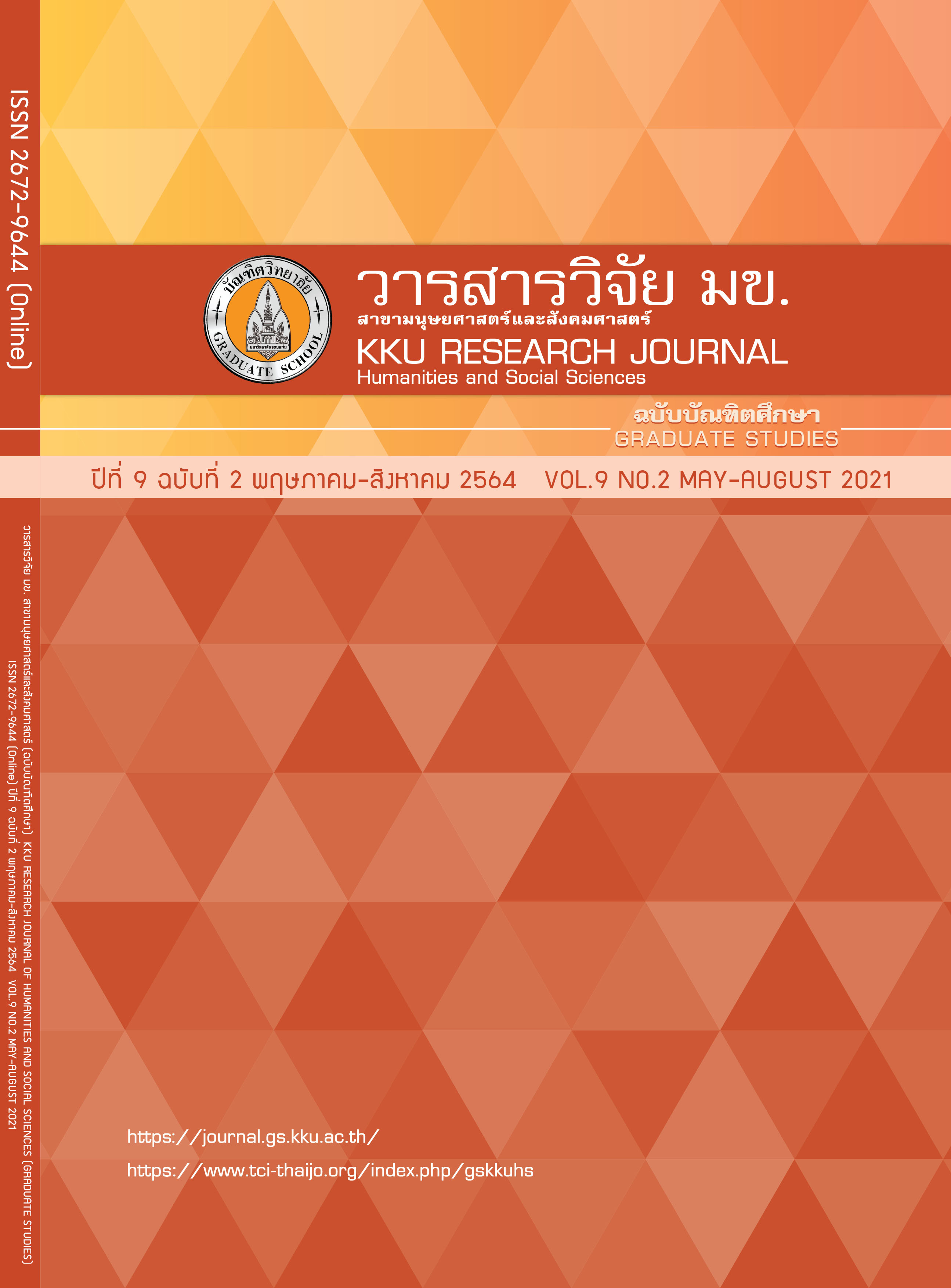Assessing Hospitalized Cancer Patients’ Satisfaction by Using Servqual Model: A Case Study of Guizhou Cancer Hospital, Guizhou Province, China
คำสำคัญ:
Patients’ satisfaction, Medical service, Servqual modelบทคัดย่อ
The purpose of this study is to understand the evaluation and satisfaction of medical services for hospitalized cancer patients in poor areas, and to summarize the ways to improve the communication efficiency between medical staff and patients. This study used mixed methods including qualitative and quantitative studies. For quantitative research, the questionnaire was constructed using the Servqual model and 271 respondents were surveyed. For qualitative research, 12 patients were interviewed in depth using open questions. The data of the questionnaire were analyzed by using the gap analysis of expectation and perception, and the answers of the in-depth interviews were summarized. Evaluation of hospitalized medical services for hospitalized cancer patients were summarized as follows: In terms of Physical facilities, there were insufficient facilities for a lot of cancer patients. In terms of Reliability, have had more senior physicians than young doctors. In terms of Responsiveness, the medical staff's response to the patient's needs have had not timely and comprehensive enough because the cancer patients have had a plenty of patients and not enough hospital resources to service. In terms of Security, the communication and collaboration of medical staff themselves have not had effective yet because their staff worked very hard and not enough too. In terms of Emotional input, besides the treatment, the medical staff have not intended in Psychiatric Consultation of the patient's emotional investment enough because they may have more time to do enough. To improve the hospitalization experience of cancer patients in poor areas, patients, medical staff, hospitals, and government agencies all need to be upgraded.
เอกสารอ้างอิง
Bjertnaes A Oyvind, Sjetne Ingeborg Strømseng, Iversen Hilde Hestad. Overall patient satisfaction with hospitals: effects of patient-reported experiences and fulfilment of expectations. British Medical Journal Quality Safety. 2012; 21(1): 39-46.
Dabaghian Fataneh Hashem, Khadem Ebrahim, Ghods Roshanak. Evaluation of Patient Satisfaction with Medical Services at Traditional Iranian Medicine Clinics in Tehran. Journal of Patient Safety & Quality Improvement. 2016; 4(1): 313-319.
Patton Michael Quinn. How to Use Qualitative Methods in Evaluation. Los Angeles: University of California; 1987.
LaVela Sherri L, Gallan S Andrew. Evaluation and measurement of patient experience. Patient Experience Journal. 2014; 1(1): 28-36.
Qin Hong, Prybutok R. Victor. Perceived Service Quality in the Urgent Care Industry. USA: North Texas University Press; 2009.
Naik C N K, Swapna G, Venugopal G. Service quality (servqual) and its effect on customer satisfaction in retailing. European Journal of Social Sciences. 2010; 16(2): 239-251.
Yin K Robert. Applications of Case Study Research. California: SAGE Publications; 2012.
Parasuraman A, Zeithaml V, Berry L. SERVQUAL: a multiple-item scale for measuring consumer perceptions of service quality. Journal of Retailing. 1988; 64(1): 12-40.
Kay C Tan, Sei W Kek. Service quality in Higher Education using an enhanced SERVQUAL approach. Quality in Higher Education. 2004; 10(1): 17-24.
Weaver A C, Callaghan M, Cooper A L, et al. Assessing interprofessional teamwork in inpatient medical oncology units. Journal of Oncology Practice. 2015; 11(1): 19-22.
Qin Xuezheng, Li Lixing, Hsieh Chee Ruey. Too few doctors or too low wages? Labor supply of health care professionals in China. China Economic Review. 2013; 24: 150-164.
Wen Jin, Hao Tianyou, Hu Xiuying. Doctors’ Workload in China: A Status-quo Study. Chinese Journal of Evidence-Based Medicine. 2015; 15(2): 133-136.
Xu Weixian. Violence against doctors in China. The Lancet. 2014; 384(9945): 745.
Shengli H, Xiaoyan D. Violence against Chinese health-care workers. Lancet. 2011; 377(9779): 1747.
Linghai S, Li Ye, Ding Ding, et al. Patient Satisfaction with Hospital Inpatient Care: Effects of Trust, Medical Insurance and Perceived Quality of Care. PLOS ONE. 2016; 11(10): 1-18.
Cai Min. Inpatients' evaluation of the health institution and the factors associated with patients' dissatisfaction. Chinese Hospital Management. 2010; 30(5): 7-9.
Hsiao W C. When incentives and professionalism collide. Health Affairs. 2008; 27(4): 949-951.
O’Leary K J, Ritter C D, Wheeler H, et al. Teamwork on inpatient medical units: assessing attitudes and barriers. Quality and Safety in Health Care. 2010; 19(2): 117-121.




